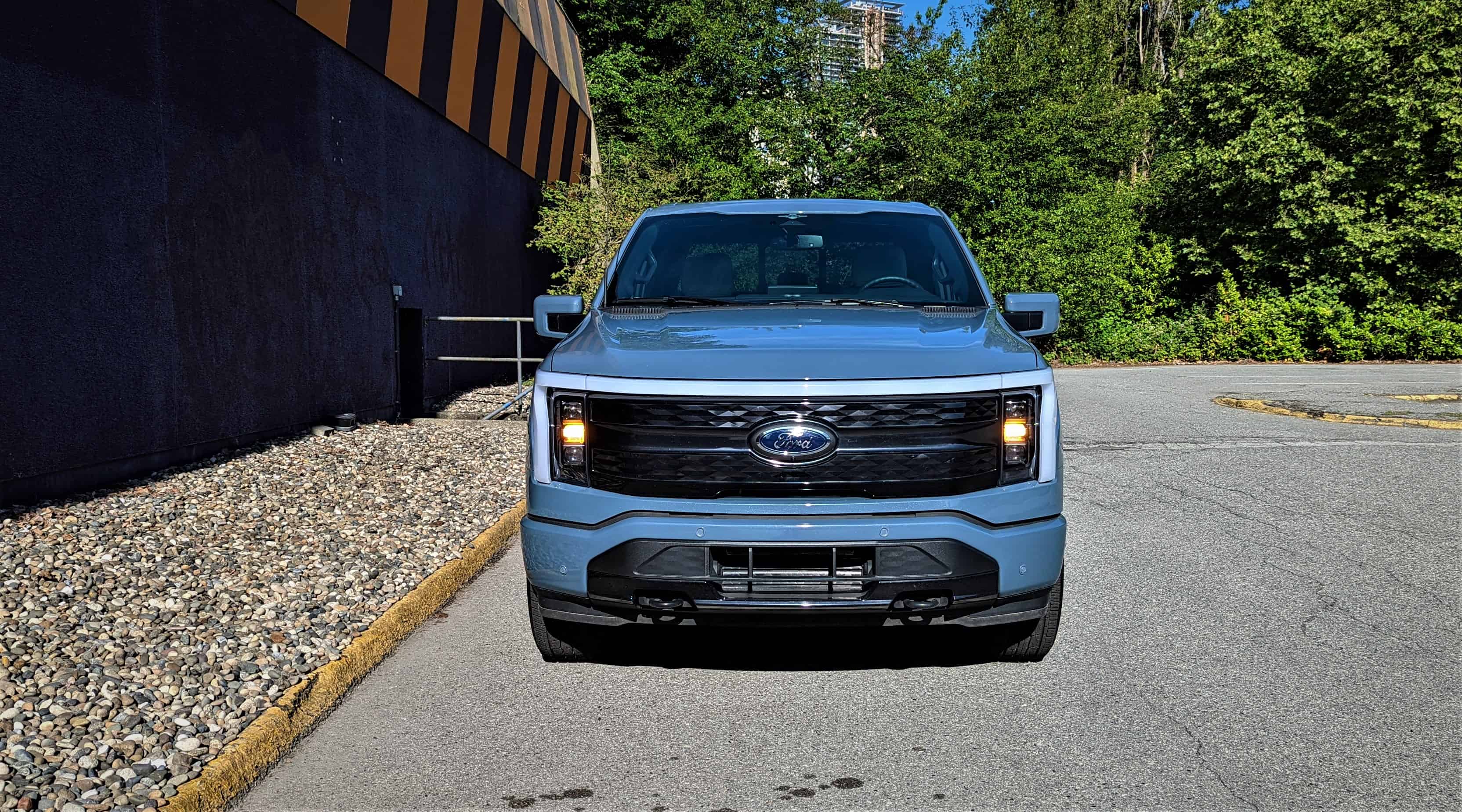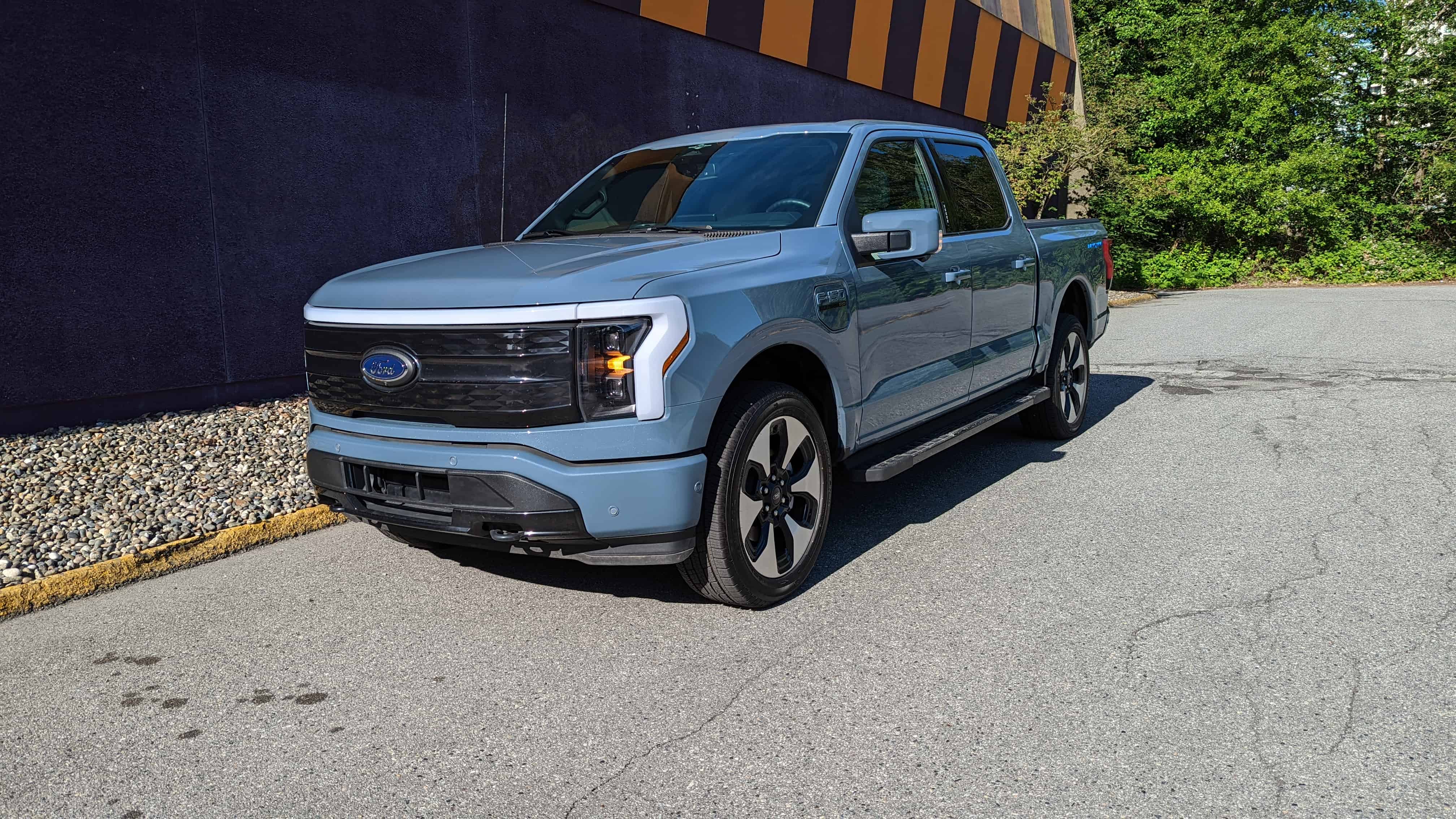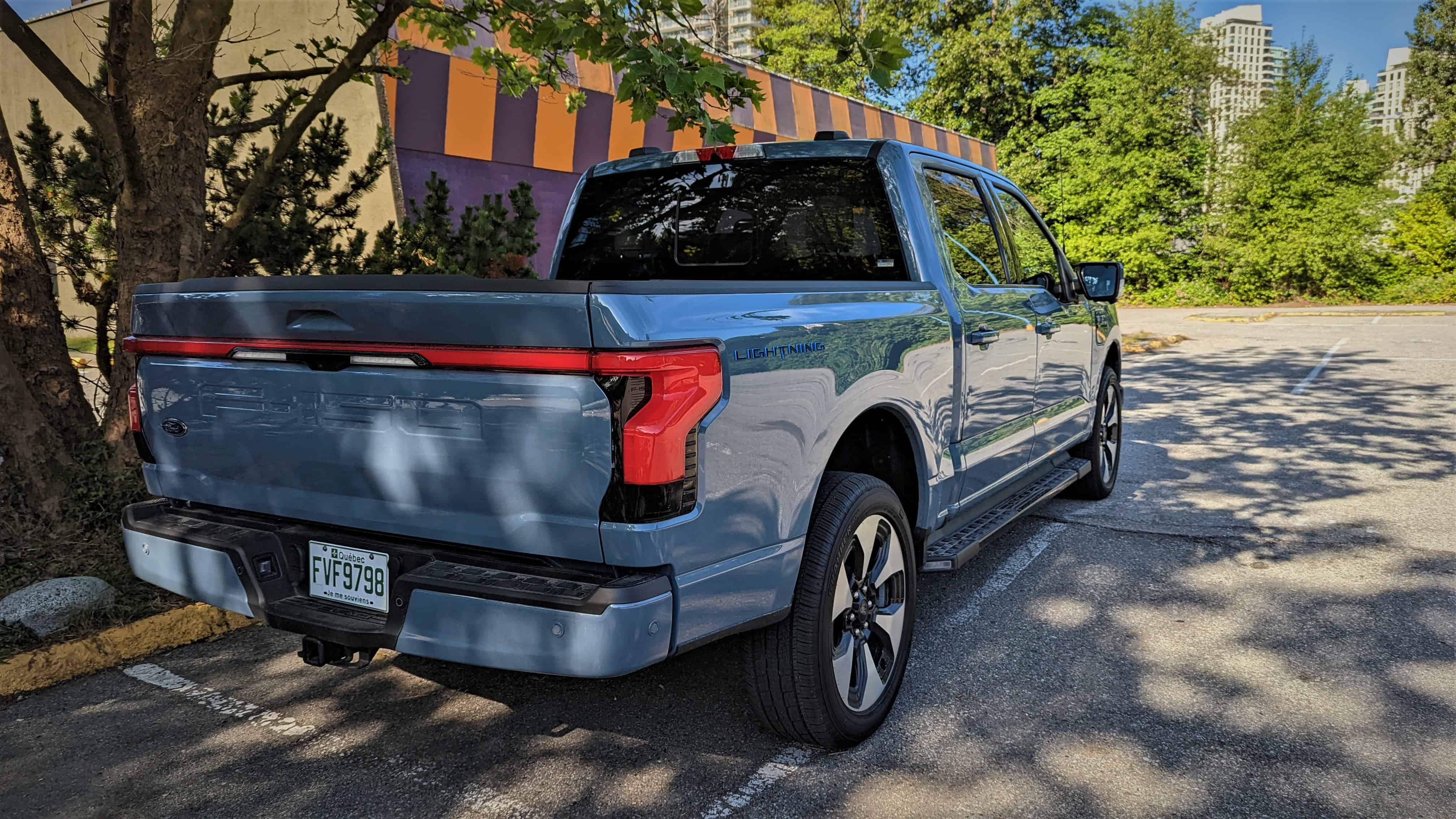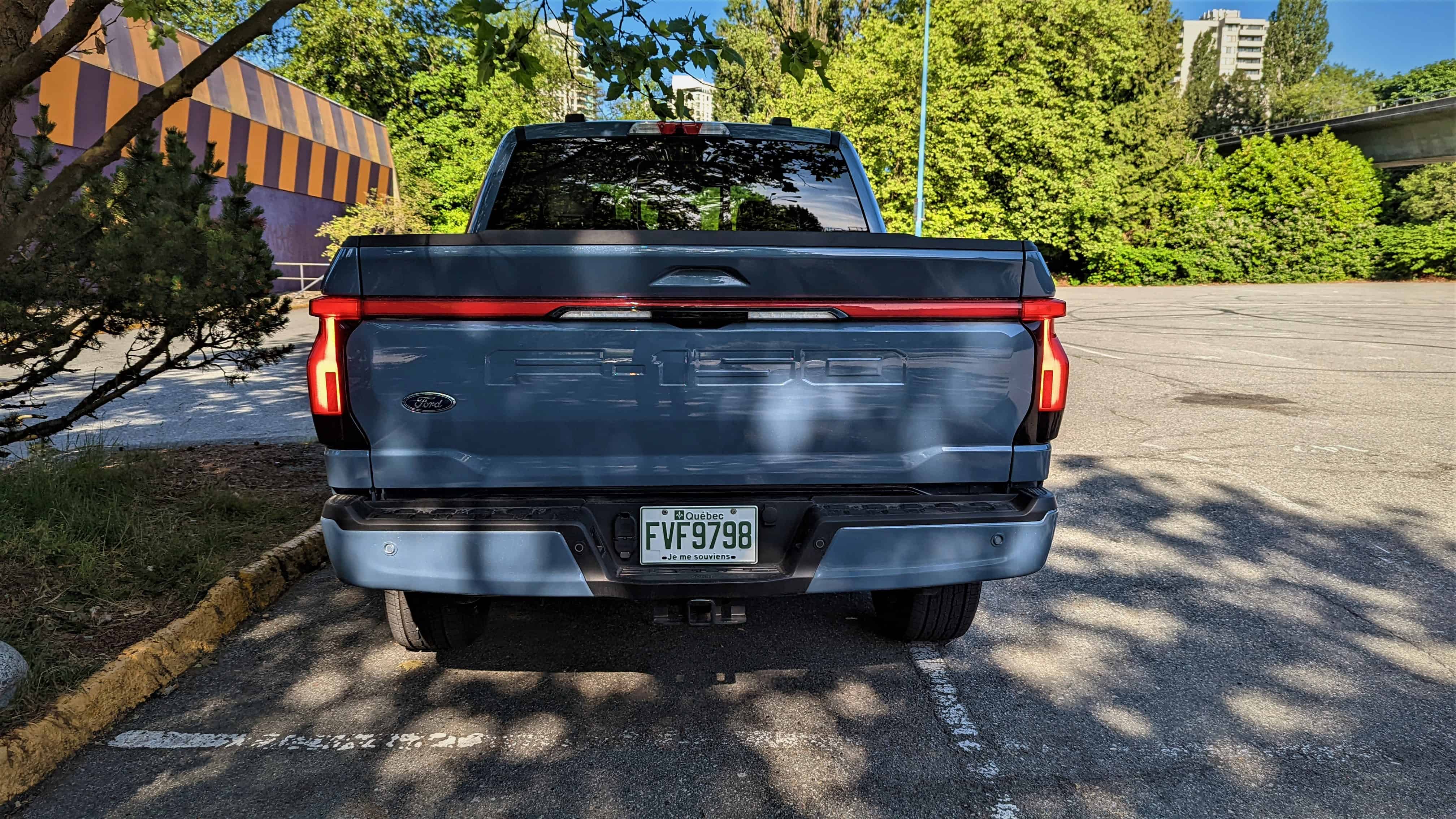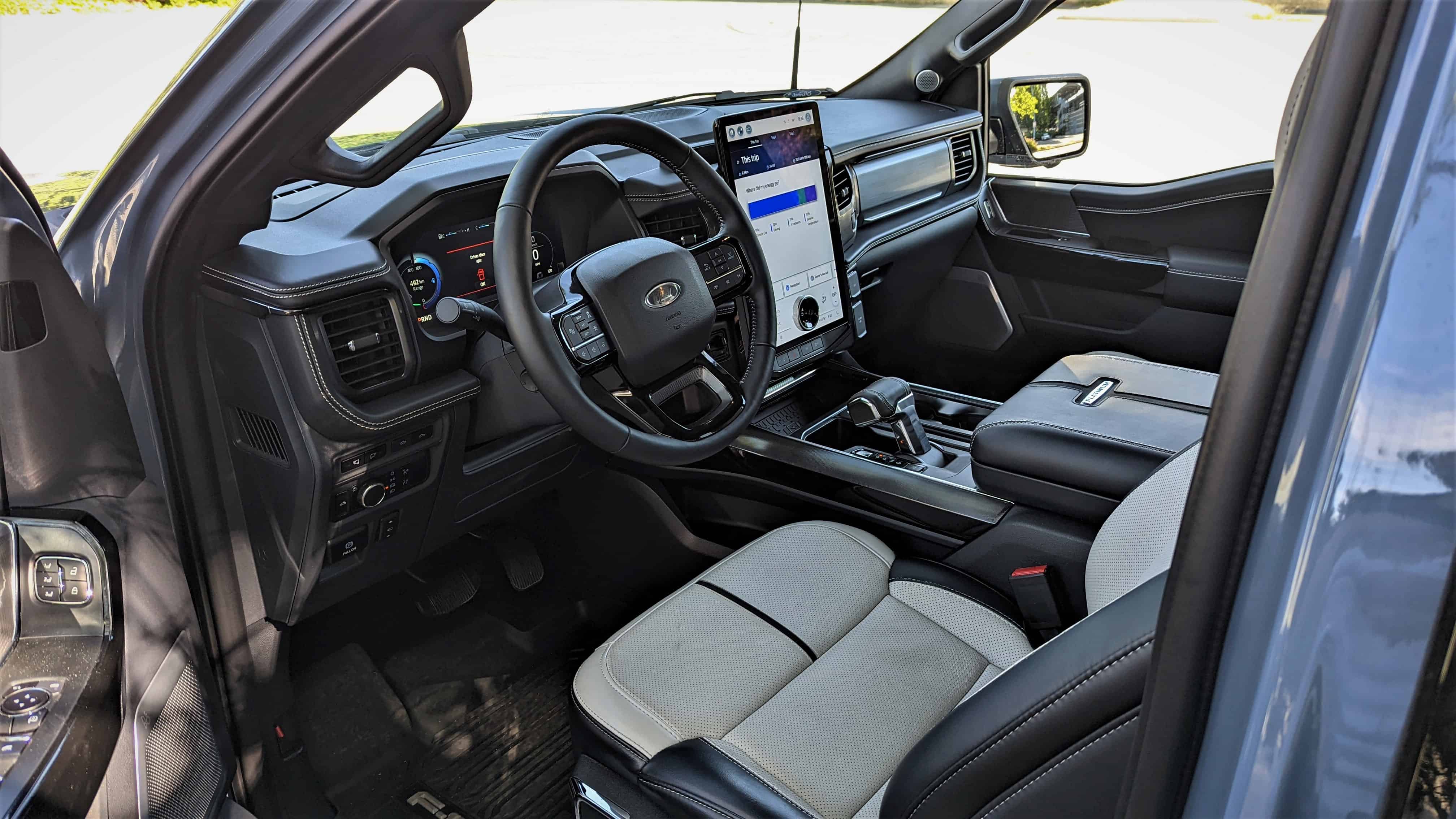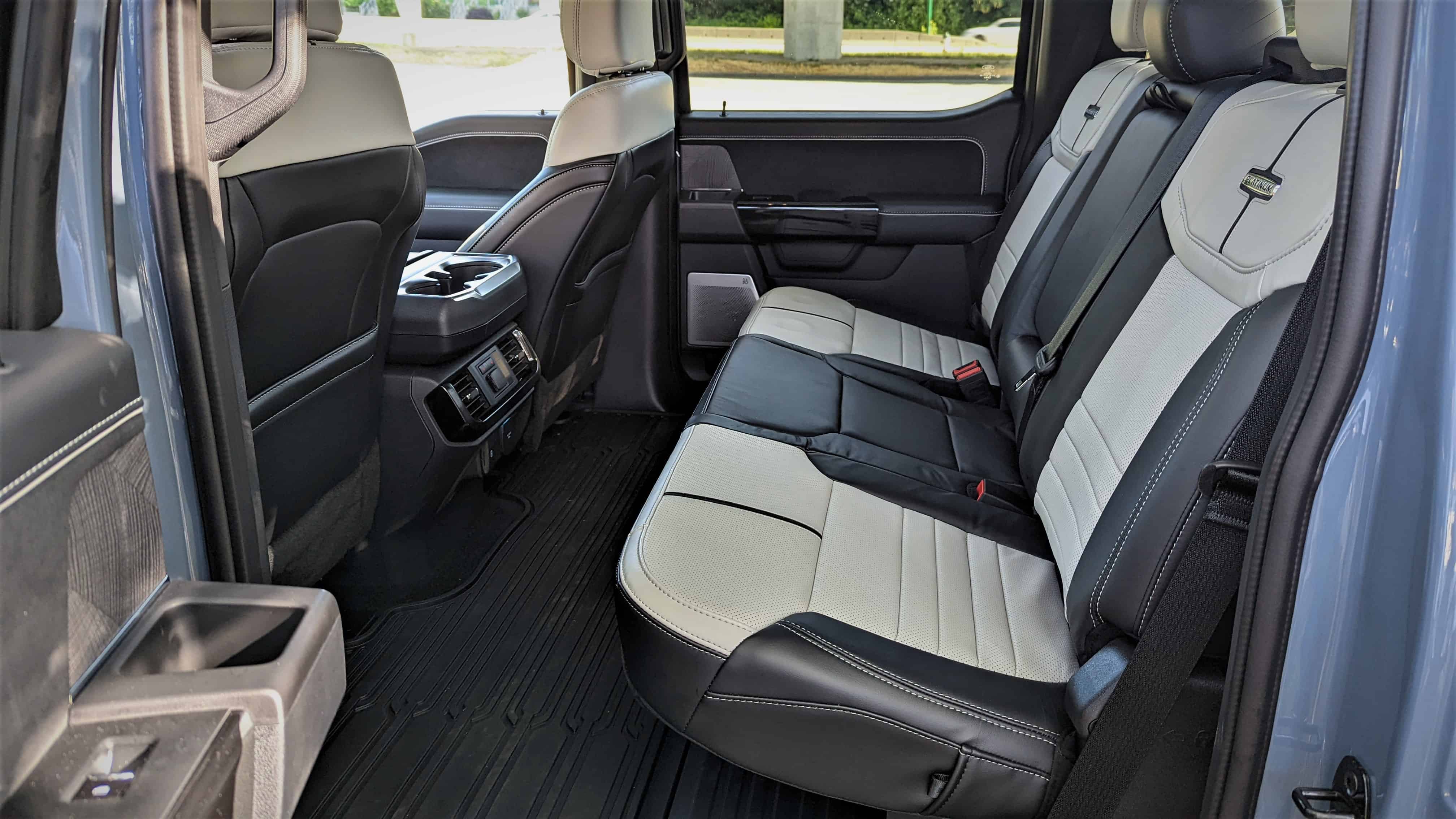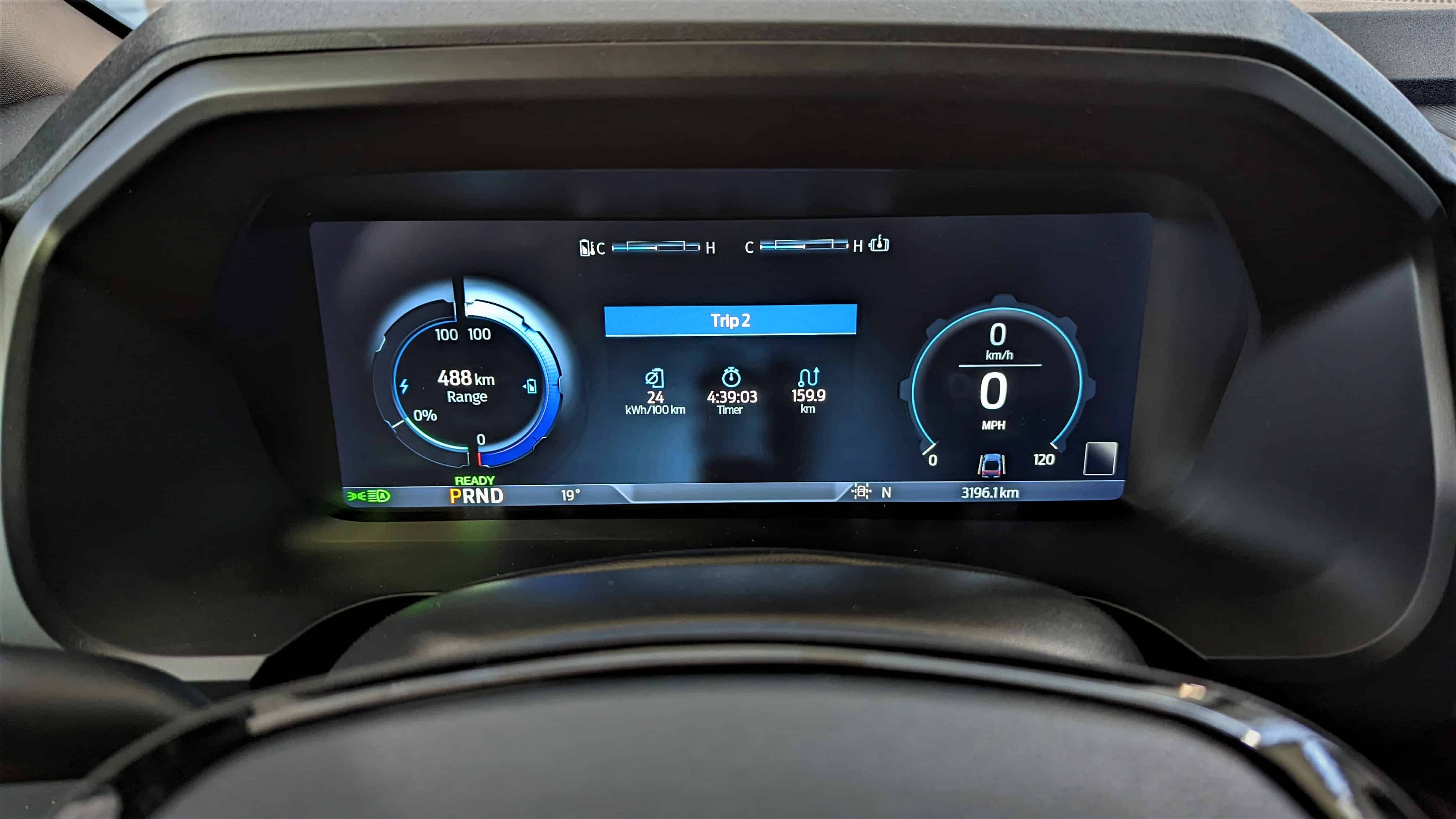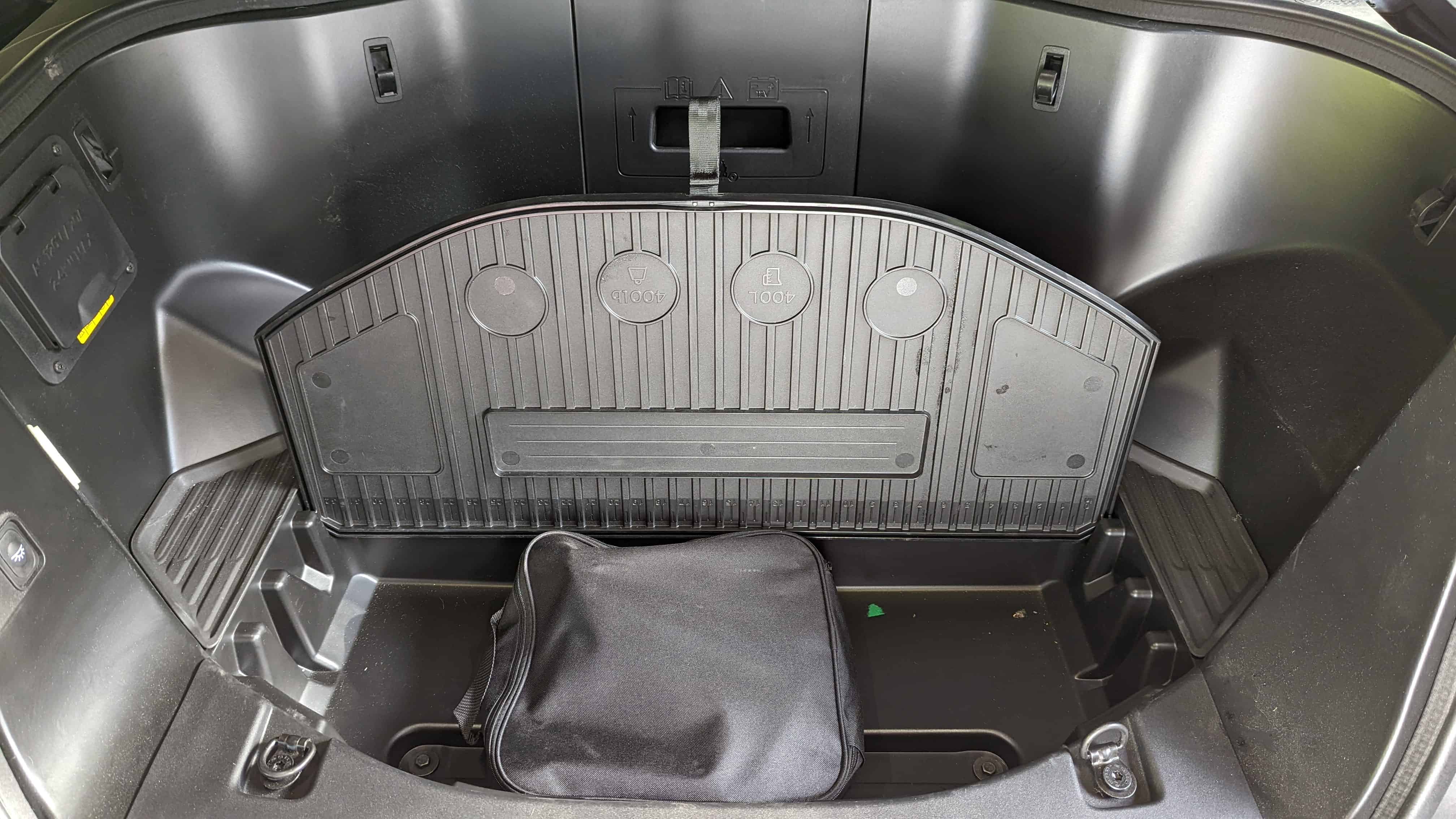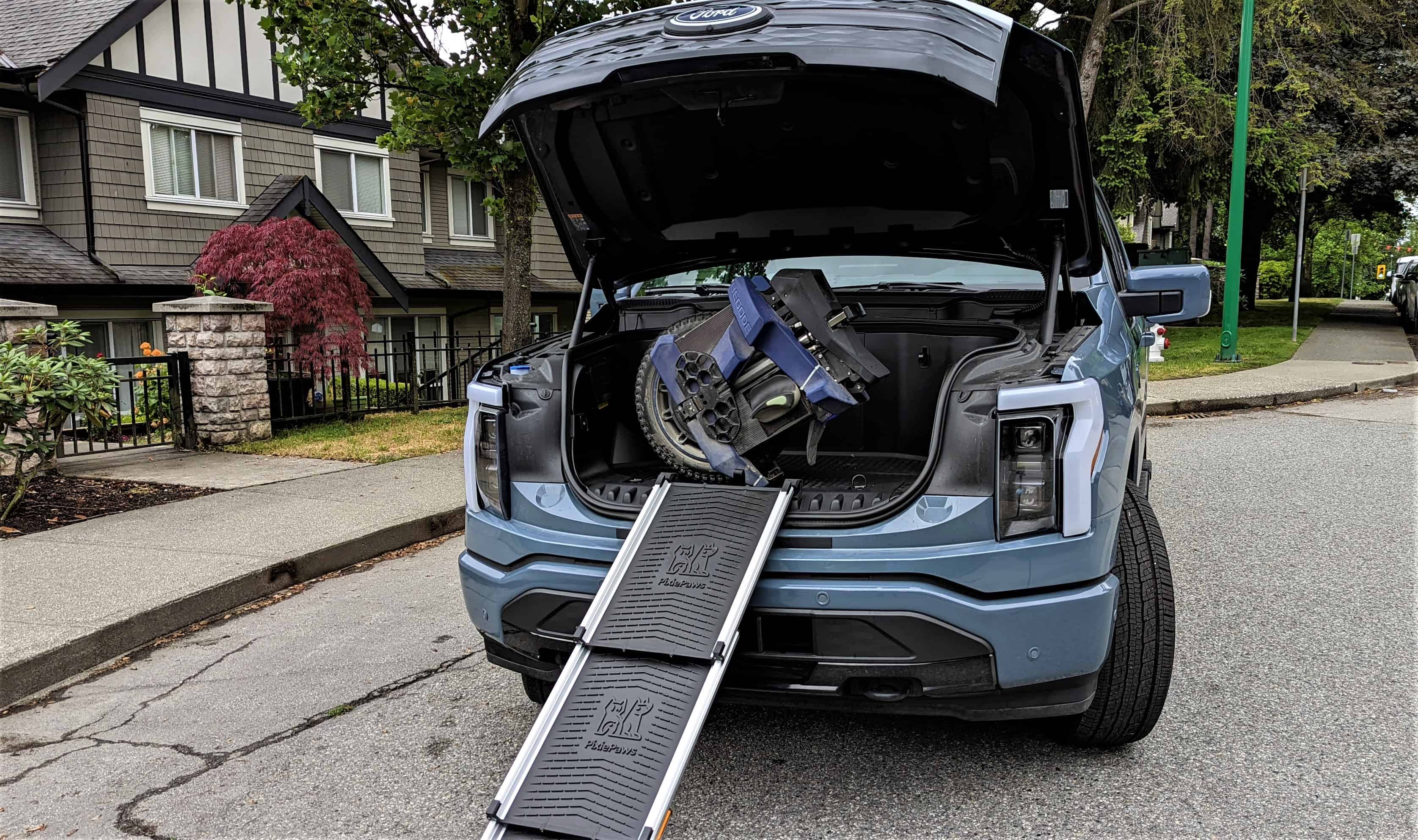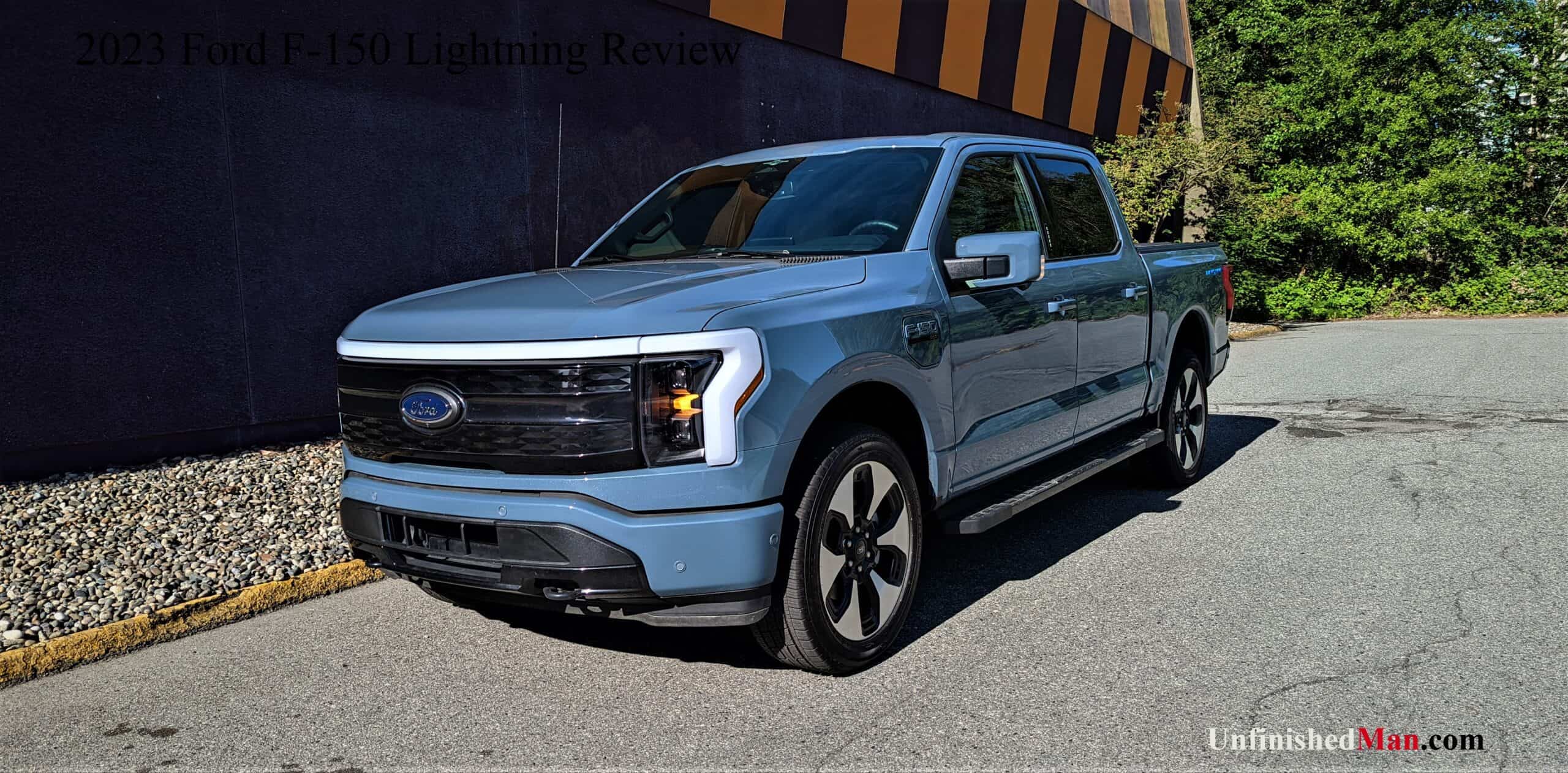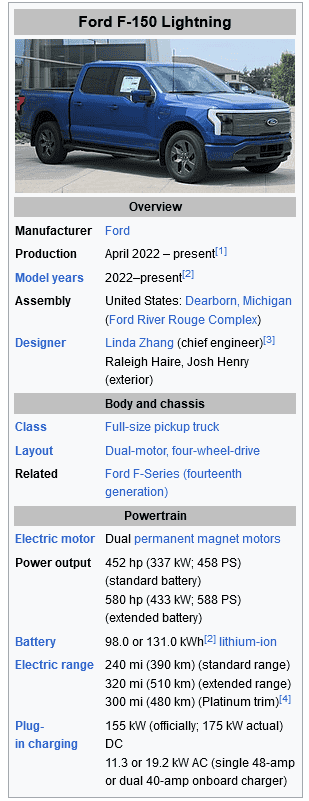Pick-up trucks are some of the most popular vehicles sold in North America; these vehicles are marketed for their versatility, ability to tow heavy loads, ability to go through rough terrains, and ability to haul all types of cargo. In reality, especially in big cities, people buy these types of vehicles as status symbols with the occasional use of the truck’s true potential.
The Ford F-Series of trucks are America’s bestselling vehicles and Canada’s best-selling trucks; the F-Series comes in various configurations, from 2-door workhorses to fully decked-out luxury-level trucks that will make you think you’re in a private jet. The F-150 is a popular choice for truck buyers, and now Ford is giving people another reason to consider the F-150, an electric version of the truck, called the F-150 Lightning.
Elon Musk first proposed the idea of an electric truck (I’m sure others have talked about electric trucks, but Elon’s announcement made the idea of an electric pickup truck mainstream) with the announcement of the Tesla Cybertruck way back in late 2019. Four years later and people are still waiting for the Cybertruck. In the meantime, companies like Rivian and Ford have actual electric trucks available for sale right now (well, there’s probably a long waitlist, but these trucks are on the road). Unlike the Cybertruck, the Ford F-150 Lightning looks like a traditional truck, which is a huge positive for regular truck buyers.
If the F-150 Lightning name seems familiar to you, it’s because Ford used to sell a gasoline version of the F-150 by the same name back in the 1990s; the SVT Lightning was a high-performance version of the F-150 and was strictly for on-road use only, with a lower ride height, a sport-tuned suspension, and performance tires.
Last week I had the opportunity to spend a week with a fully-loaded 2023 Ford F-150 Lightning Platinum; below are my thoughts on and experience with my first-ever electric pick-up truck.
Table of Contents
2023 Ford F-150 Lightning Canadian Prices
In Canada, the F-150 Lightning is offered in three trims. The base F-150 Lightning XLT has a starting price of $79,000, the Lightning Lariat has a starting price of $90,000, and the top-of-the-line F-150 Lightning Platinum has an eye-watering starting price of $121,000. The first two trims come with “Standard Range Batteries” but can be optioned with the larger “Extended Range Battery.”
In the United States, there’s a Pro trim, which slots below the XLT trim; this is a fleet vehicle without many luxury features seen on the higher trims. Click here to see all the US-market F-150 Lightning trim and prices.
Does the F-150 Lightning Qualify for Canadian EV Rebates?
In Canada, there are two types of incentives for EV buyers. There’s the federal incentive, which is $5,000, and provincial incentives, which depends on the province and ranges from $0 – $7,000. Unfortunately, the Ford F-150 Lightning doesn’t qualify for any of the incentives because of its high starting price of $79,000. For a complete list of which vehicles qualify for the iZEV incentives, click here.
2023 Ford F-150 Lightning Batteries and Electric Motors
The F-150 Lightning comes with two battery sizes. The first XLT and Lariat come standard with a 98-kWh battery pack, and the Platinum comes standard with a 131-kWh battery pack. The XLT and Lariat can be equipped with the optional Extended Range battery for an additional cost.
All trims of the F-150 Lightning are equipped with dual motors; on the XLT and Lariat, the dual motors produce 331 kW (452 horsepower) and 1,050 Nm (775 pound-feet) of torque when equipped with the “smaller” battery pack and all of the trims equipped with the larger battery pack produce 433 kW (580 HP) and 1,050 Nm of torque. These are impressive numbers, not quite as much horsepower as the absolutely bonkers F-150 Raptor R we reviewed a couple of months ago, but F-150 Lightning does beat the Raptor R with its superior torque numbers.
When equipped with the Standard Range batteries, the F-150 Lightning has a theoretical range of 386 kilometers, and the Extended Range equipped F-150 Lightnings are rated at 515 kilometers on the XLT and Lariat and 483 kilometers on the Platinum trim. These numbers are based on ideal conditions, without any payload and without towing anything. The range of EVs depends on many things, like driving style, ambient temperature, and payload; this is also true for gasoline or diesel vehicles, but we don’t notice that as much because there are gas stations everywhere, and filling up a gas tank takes less than 5 minutes.
F-150 Lightning Electricity Consumption
I couldn’t find any consumption/efficiency numbers on Ford’s website, but the NRCan website rates the F-150 Lightning with the Extended Range battery pack at 3.0/3.7/3.3 Le/100 kilometers. Based on the definition provided by NRCan below, the above numbers translate to 26.7/32.9/29.37 kWh/100 km. These numbers are for ideal conditions without any payload or towing.
To help compare vehicles that use electricity, a conversion factor is used by NRCan to convert electrical energy consumption values, expressed in kilowatt hours per 100 kilometers (kWh/100 km), into gasoline liters equivalent per 100 kilometers (Le/100 km). One liter of gasoline contains the energy equivalent to 8.9 kWh of electricity.
https://natural-resources.canada.ca/home
After spending a week with the F-150 Lightning Platinum, the onboard computer showed 24 kWh/100 km; this took place on about 50/50 city/highway driving. I drove the F-150 Lightning quite gently like any large vehicle like this, because it’s not a sports car. The temperatures during the review week were in the mid-20-degree Celsius range (mid-70s Fahrenheit).
The 24 kWh/100 km (translates to 2.70 Le/100 km) is quite an impressive number because I’m currently driving the 2023 Volvo XC40 Recharge (fully electric), and I’m getting about 20 kWh/100 using the same routes as my Lightning review. The Lightning is a much bigger vehicle compared to the XC40, which is a compact crossover, making the consumption of the F-150 Lightning even more impressive.
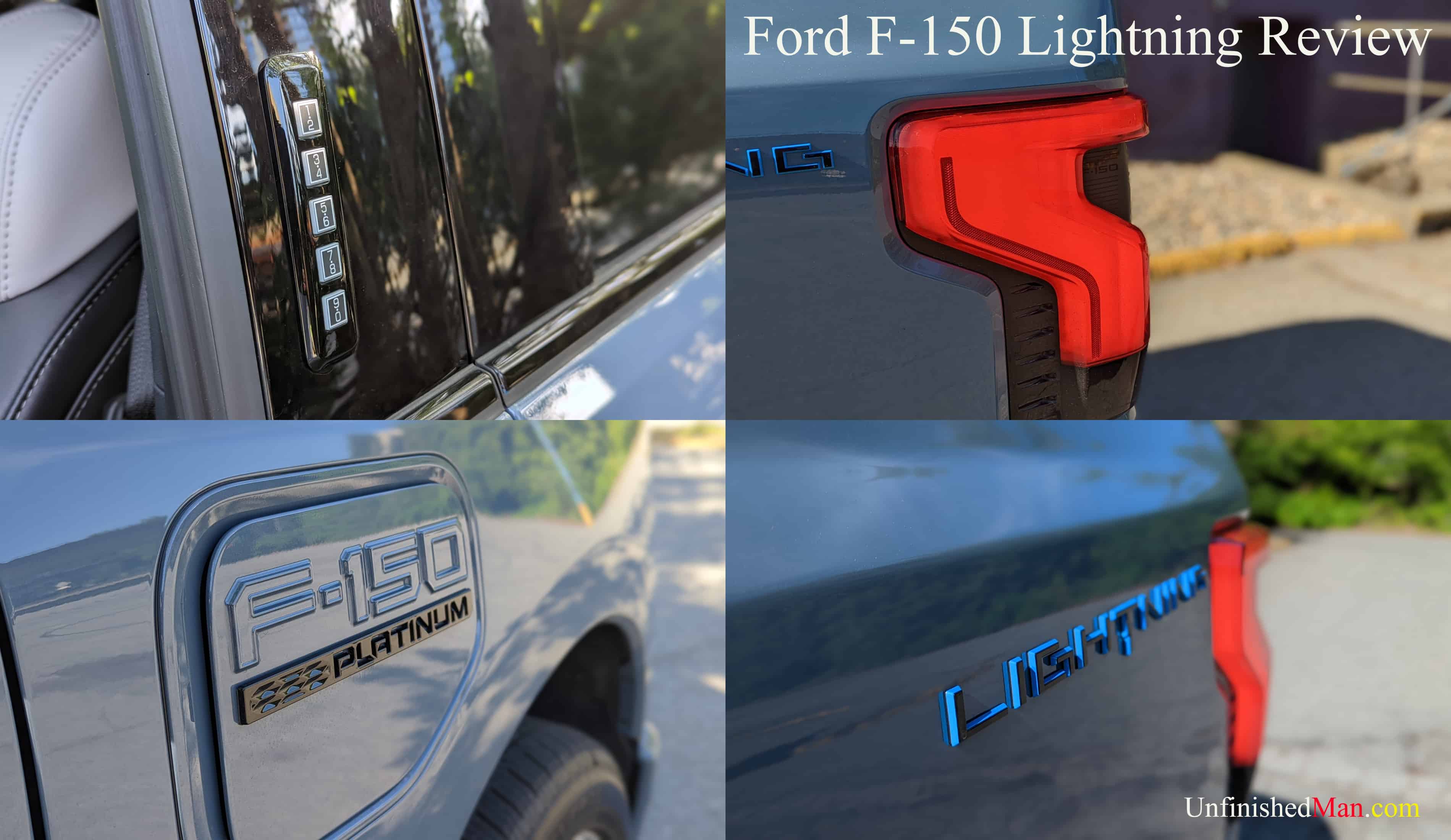
F-150 Lightning Towing and Payload
The Standard Range battery-equipped Lightning electric trucks are rated at 7,700 pounds of towing capacity and a payload of 2,000 pounds, while the Extended Range-equipped trucks are rated at 10,000 pounds and payload capacity of 1,800 pounds. Ford says the payload capacity will vary depending on optional equipment and accessories installed on your particular truck.
However, if you are towing with your F-150 Lightning, you can say goodbye to the above theoretical driving ranges. As shown by many publications, when towing heavy loads and at highway speeds, the range can drop over 50% of the claimed number. If you are planning on towing with your F-150 Lightning, prepare to spend a lot of time at charging stations.
The F-150 also features a front trunk, which is a great place to store things you don’t want to leave in the bed. The front truck is quite useful, especially because the “grill” section lifts with the hood, making it easier to put stuff in. The trunk is a good size; it’s almost as big as a small sedan’s trunk, with 14.1 cubic feet of space. The trunk also houses 4 120-volt outlets and a USB plug, with a drain at the bottom.
Charging the F-150 Lightning
At a DC fast charging station, the F-150 can be charged at 120 kW or 155 kW, depending on which battery your truck is equipped with. According to Ford, the F-150 Lightning can be charged from 15% to 80% in 44 minutes at a 150 kW DC fast charging station. While the slower 50 kW chargers will do the same in 91 minutes for the Standard Range battery and 122 minutes for the Extended Range battery equipped F-150 Lightning.
At home, Level 2 charging is a must if you own an F-150 Lightning, as using a standard 120-volt outlet will be painfully slow; Ford doesn’t even provide a number for how long it takes to fully charge the batteries on a Level 1 charger.
It would take 10 hours for the standard batteries and 8 hours for the extended batteries to charge from 15% – 80% using the 80-Amp Ford Charge Station Pro. On a standard 48A Level 2 charger, those times increase to 10 and 13 hours for the two battery sizes, respectively.
The Ford F-150 Lightning is also capable of powering your house (with additional equipment) and powering other electronics such as tools and even other EVs with its “Pro Power Onboard” system. The onboard system has a 9.6 kW output, which can be used to power many things like tools, camping gear, and even other electric vehicles.
Ford F-150 Lightning Styling
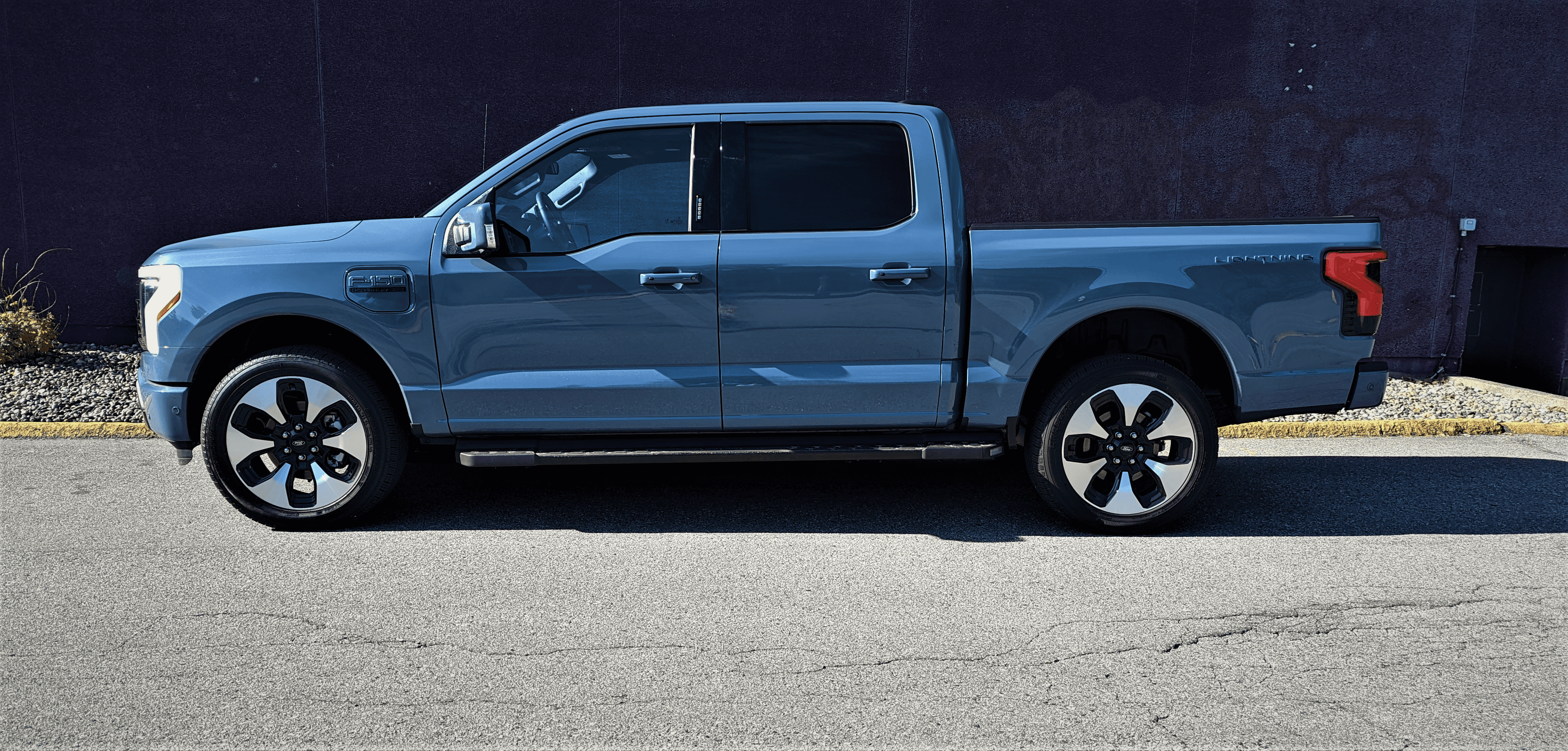
There are two philosophies when it comes to designing electric vehicles. Car designers either make the EVs look futuristic or go with traditional styling. The first type of design may not be for everyone, but those designs emphasize aerodynamics, which is great for efficiency. The traditionally designed EVs look like standard internal combustion vehicles, for the most part, and they have more of an appeal to the general public.
The Ford F-150 Lightning looks like a traditional F-150 truck; if you’re not a car guy, you most likely won’t notice any difference between a gasoline-powered and an electric-powered F-150. The biggest difference on the F-150 EV is the removal of the front grill; in its place is a solid piece of shiny plastic cover with diamond patterns that look almost like a traditional grill. There’s an LED lightbar running across the hood, connecting both of the headlights. The rear also features a red LED lightbar connecting the two taillights. And that’s all there is that differentiates an F-150 Lightning from a good old fashion dinosaur-juice-consuming F-150 pickup truck.
Ford F-150 Lightning Interior
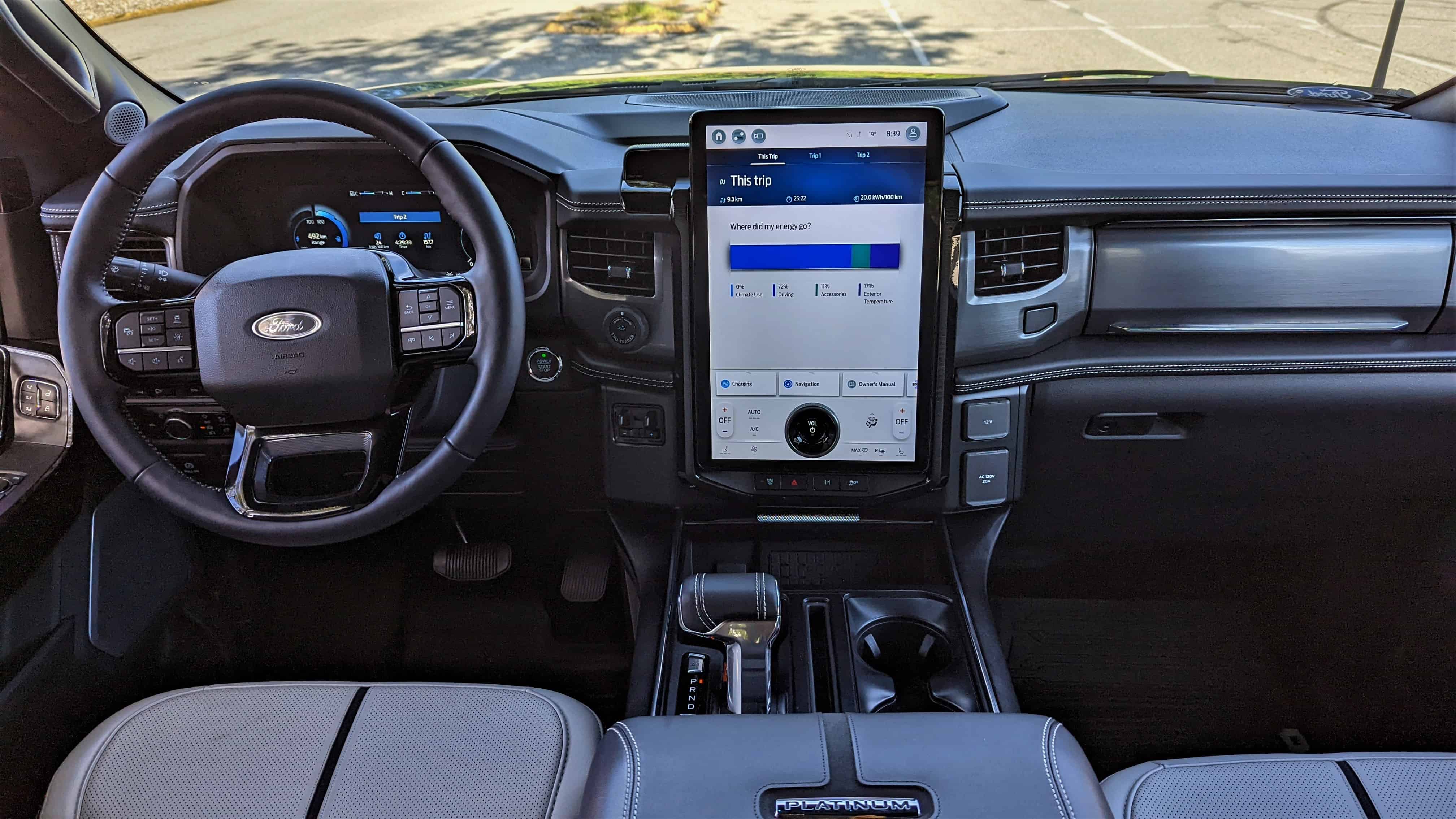
The interior uses the same philosophy as the exterior; you won’t find a super-minimalist interior on the F-150 Lightning. You’d be forgiven for mistaking this interior for that of the traditional F-150. However, one big difference is the large vertical infotainment screen found on the Mustang Mach-E and the new Expedition.
This infotainment system has revised software and is more streamlined than the first time we saw it in the Mach-E. It’s fairly simple to use, with most of the information easily accessible. It responds quickly to the touch, and the graphics are eye pleasing. Besides this, it’s the same spacious and ergonomic interior found on other F-150s. There is more than enough leg and headroom for all occupants, people as tall as 6’ 5” wouldn’t have a problem with head, shoulder, or leg room. The interior is like a living room.
The gasoline-powered F-150 already has a quiet interior, but the F-150 Lightning takes it to another level. As is common with most EVs, the interiors are extremely quiet, but what’s different with her F-150 Lightning is the lack of tire noise. I was shocked not to hear any tire noise in the cabin, even at 110+ km/h highway speeds. It is an impressive feat and makes long rides even more enjoyable between all the charging stations you’ll need to visit if you’re on a long trip.
The F-150 Lightning has the latest tech and convenience features like heated/cooled seats, heated steering wheel, 360-degree cameras, lane keep assist, blind spot monitoring, smart cruise, and more. For a full list of features, check out Ford Canada’s website.
Overall Impressions on the Ford F-150 Lightning Electric Truck
The F-150 Lightning makes sense as a vehicle you’d drive around town or even go on some trips; for long trips, you’ll need to ensure enough fast chargers exist on your planned route. However, it starts to make less sense as a work vehicle, especially if you are towing a lot or carrying heavy payloads. The range drops significantly when towing is involved, especially when towing on the highway.
As a work vehicle for a business that operates in the city, it still has enough range to make multiple trips to multiple clients throughout the day, even with a full payload.
2023 Ford F-150 Lightning Review Photo Gallery
